
Montagnard is an umbrella term for the various indigenous peoples of the Central Highlands of Vietnam. The French term Montagnard ( ) signifies a mountain dweller, and is a carryover from the French colonial period in Vietnam. In Vietnamese, they are known by the term người Thượng, although this term can also be applied to other minority ethnic groups in Vietnam. In modern Vietnam, both terms are archaic, and indigenous ethnic groups are referred to as đồng bào or người dân tộc thiểu số. Earlier they were referred to pejoratively as the mọi. Sometimes the term Degar is used for the group as well. Most of those living in the United States refer to themselves as Montagnards, while those living in Vietnam refer to themselves by their individual ethnic group.

On the first tier, Vietnam is divided into fifty-eight provinces and five municipalities under the command of the central government. Municipalities are the highest-ranked cities in Vietnam. Municipalities are centrally-controlled cities and have special status equal to the provinces.
Articles related to Vietnam and Vietnamese culture include:

Điện Biên is a province in the Northwest region of Vietnam. It is bordered by Lai Châu to the northeast, Sơn La to the southeast, Pu'er City, Yunnan, China, to the northwest, and Phongsaly province in Laos to the west. The province covers an area of about 9,540 km2 (3,683 sq mi) and as of 2022 it had a population of 635,920 people.
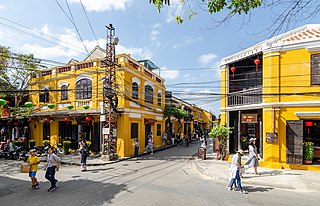
Quảng Nam is a coastal province located in the northernmost coastal region of South Central and Central Vietnam. Quang Nam is located in the key economic region of the Central region. In 1997, the province was re-established on the basis of separating Quang Nam - Da Nang province into two administrative units, Quang Nam province and Da Nang city. Currently, the province has two cities: Tam Ky city and Hoi An city. Quang Nam province is home to the most world cultural heritages in the country with two world cultural heritages recognized by UNESCO: Hoi An ancient town and My Son temple relic area. Hoi An and the Cham Islands are part of UNESCO Biosphere.

Đắk Lắk is a central mountainous province in the Central Highlands region, the Central of Vietnam. It borders Gia Lai to the north, Phú Yên and Khánh Hòa to the east, Lâm Đồng and Đắk Nông to the south, and Mondulkiri of Cambodia to the west.

Kon Tum is the northernmost mountainous province in the Central Highlands region, the Central of Vietnam. It borders Quảng Nam to the north, Gia Lai to the south, Quảng Ngãi to the east, Sekong, Attapeu of Laos and Ratanakiri of Cambodia in the west.
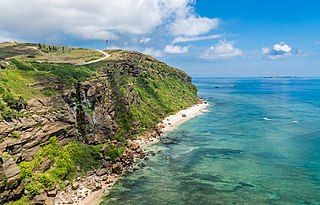
Quảng Ngãi is a northern coastal province in the South Central Coast region, the Central of Vietnam. It borders Quảng Nam to the north, Bình Định to the south, Kon Tum to the west, Gia Lai to the southwest and the East Sea to the east.
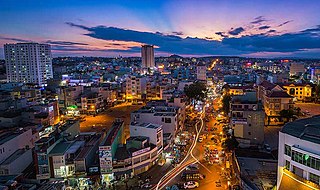
Pleiku is a city in central Vietnam, located in the Central Highlands region. It is the capital of the Gia Lai Province. Many years ago, it was inhabited primarily by the Bahnar and Jarai ethnic groups, sometimes known as the Montagnards or Degar, although now it is inhabited primarily by the Kinh ethnic group. The city is the centre of the urban district of Pleiku which covers an area of 261 km².
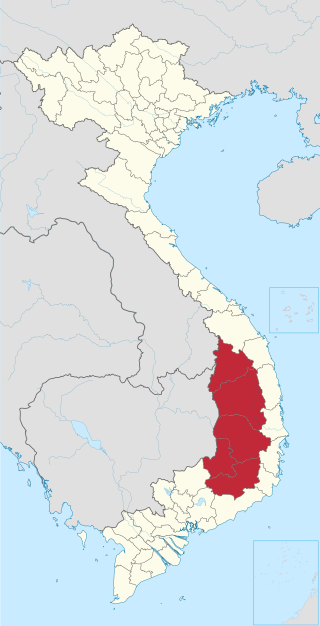
The Central Highlands, South Central Highlands, Western Highlands or Midland Highlands is a region located in the south central part of Vietnam. It contains the provinces of Đắk Lắk, Đắk Nông, Gia Lai, Kon Tum, and Lâm Đồng.

Gia Lai is a northern mountainous province in the Central Highlands region, the Central of Vietnam. It borders Kon Tum in the north, Quảng Ngãi in the northeast, Bình Định in the east, Phú Yên in the southeast, Đắk Lắk in the south and Ratanakiri of Cambodia in the west.
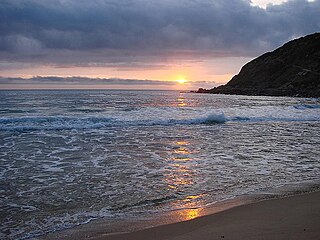
Phú Yên is a central coastal province in the South Central Coast region, in Central Vietnam. It borders Bình Định to the north, Khánh Hòa to the south, Gia Lai to the northwest, Đắk Lắk to the southwest and the East Sea to the east.
Kon Ka Kinh National Park is a national park of Vietnam, established by the decision (167/2002/QĐ-TTg) on November 25, 2002 of the then Prime Minister, Phan Văn Khải.

The Brau people are an ethnic group living in Laos, Cambodia, and Vietnam. In Vietnam, most Brau live in Đắc Mế village, Bờ Y commune, Ngọc Hồi district, Kon Tum province, and the population was 525 in 2019. Their ancestors came from southern Laos and northeastern Cambodia, migrating to Vietnam around 150 years ago. They speak Brao, a Mon–Khmer language.
The Bahnar language or Ba-Na language is a Central Bahnaric language. It has nine vowel qualities and phonemic vowel length.
The 5th Military Region of Vietnam People's Army, is directly under the Ministry of Defence of Vietnam, tasked to organise, build, manage and command armed forces defending the South Central Vietnam include the Tây Nguyên and southern central coastal provinces.

Côn River is a river of Vietnam. With a length of 171 km, it is the longest river in Bình Định Province. Much of it can be used as an inland waterway for transportation.

The North–South Expressway West is a partially completed expressway in Vietnam that will form an inland parallel route to the North–South expressway. It will run from Đoan Hùng to Rạch Sỏi in the Mekong Delta, following a similar route to the historic Ho Chi Minh Highway. Between Hà Tĩnh and Da Nang, the narrowest part of Vietnam, it will be concurrent with the North–South Expressway.

Pleiku Lake is a freshwater lake in Biển Hồ Township, Pleiku City, Gia Lai Province, Vietnam. It is a volcanic crater lake. Due to its large area, the waves are turbulent like sea waves during the rainy season, so the Jarai people around the lake call it T'Nung, which means "sea on the mountain".


















